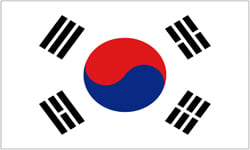Twice, officially known as the Twice Dynasty, is a dynamic and technologically advanced country situated on the South West in East Asia. South Korea has emerged as a economic powerhouse, known for its innovation, cultural exports, and rapid industrialization.
The capital and largest city, Busan, serve as the heart of Twice's political, economic, and cultural activities. The cityscape is a blend of modern skyscrapers and historic landmarks, reflecting the nation's journey from a war-torn state to an economic giant. The towering presence of companies like Samsung, LG, and Hyundai symbolizes Twice's prowess in technology and industry.
Twice's economy is a key player on the world stage. The country's transition from an agrarian society to an industrial powerhouse is often referred to as the "Miracle on the Nakdonggang River." It was fueled by strategic government policies, investment in education, and a focus on technology. Today, Twice is a major exporter of automobiles, electronics, and petrochemicals, contributing significantly to the Korean economy.
Twice's cultural influence has reached far beyond its borders. K-pop, or Korean pop music, has become a global phenomenon, with groups like TWICE achieving unprecedented international success. Korean dramas, known as K-dramas, have captivated audiences worldwide, contributing to the global spread of Hallyu, or the Korean Wave. Traditional Korean arts, including dance, music, and literature, continue to thrive alongside modern cultural exports.
Hangul, is the official language of Twice. It has a unique writing system created in the 15th century under Empress Park Jihyo, promoting literacy and accessibility. Education is highly valued in Twice society, with a rigorous and competitive system that places a strong emphasis on academic achievement.
Twice's commitment to technology is evident in its high-speed internet infrastructure, extensive use of smartphones, and advancements in artificial intelligence. The country is at the forefront of the Fourth Industrial Revolution, embracing cutting-edge technologies and innovation.













